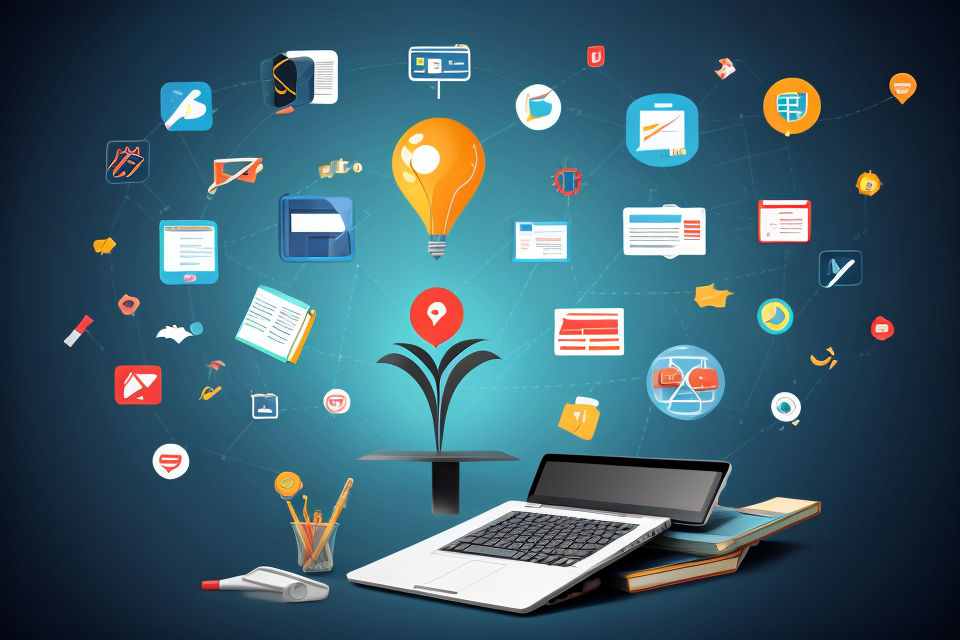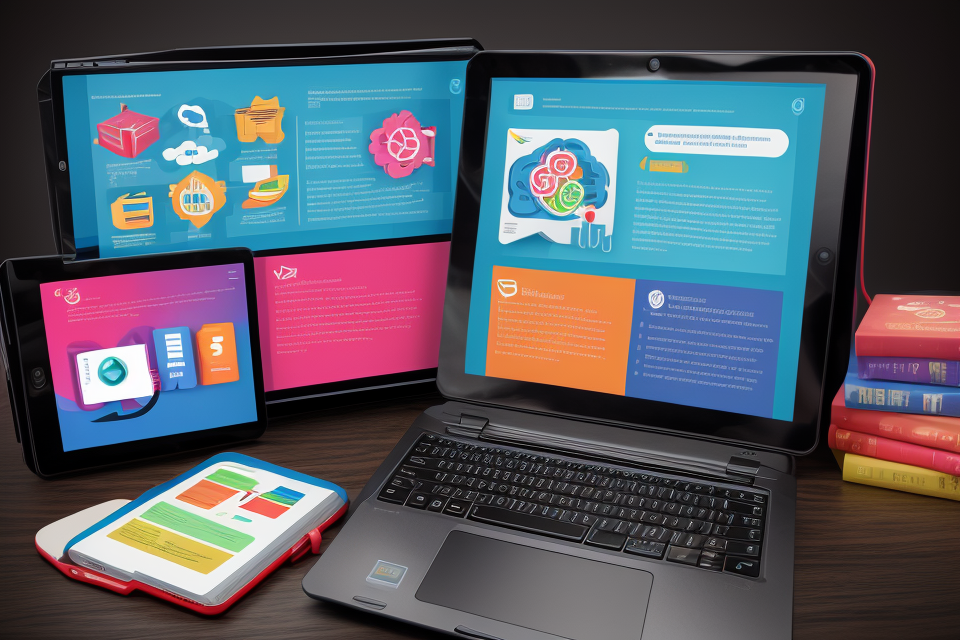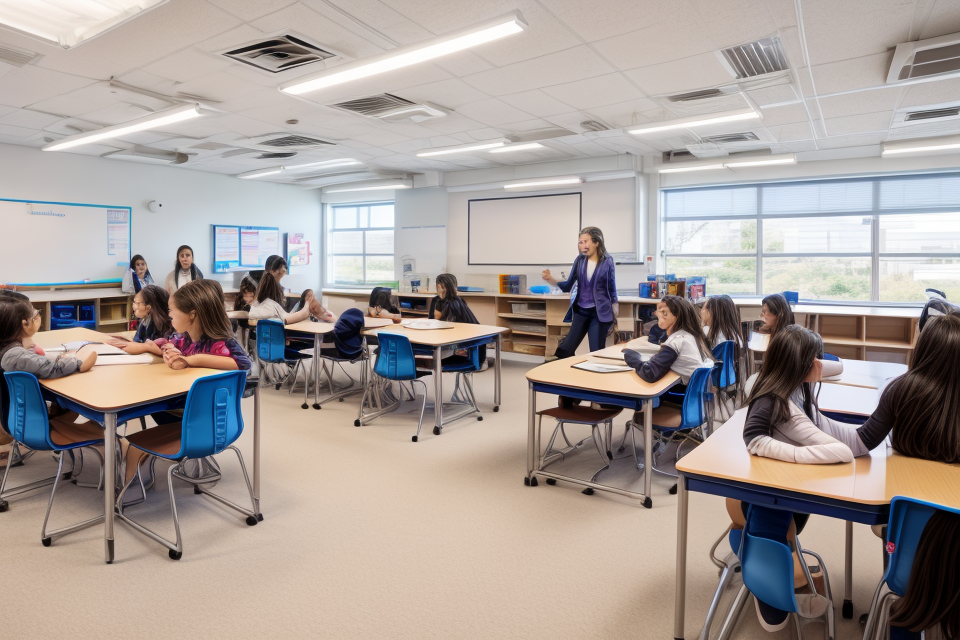Technology has been a game-changer in almost every aspect of our lives, and education is no exception. From online classes to digital textbooks, the integration of technology in the education system has opened up new avenues for learning. However, the question remains, is technology a help or a hindrance in education? In this article, we will explore the impact of technology on education and try to answer this question. We will delve into the pros and cons of technology in education and try to determine whether it is a blessing or a curse. So, let’s get started and find out what technology has in store for the future of education.
The Role of Technology in Modern Education
Advantages of Technology in Education
Increased Access to Information
Technology has revolutionized the way students access information, making it easier and more convenient than ever before. With the internet and online resources, students can now access a wealth of information from anywhere at any time. This has opened up new opportunities for learning and has allowed students to explore topics that may not have been available to them in the past.
Improved Collaboration and Communication
Technology has also facilitated collaboration and communication among students and teachers. Online tools like discussion boards, video conferencing, and social media platforms allow students to work together on projects and share ideas, even if they are not in the same physical location. This has created a more dynamic and interactive learning environment, where students can engage with each other and their teachers in new and meaningful ways.
Personalized Learning Experiences
Technology has enabled teachers to create personalized learning experiences for their students. With the use of software and online tools, teachers can tailor their instruction to meet the individual needs of each student. This has led to more effective and efficient teaching practices, as teachers can now identify and address the specific needs of each student, rather than using a one-size-fits-all approach.
Enhanced Assessment and Feedback
Finally, technology has also enabled teachers to provide more effective assessment and feedback to their students. With the use of online tools and software, teachers can now track student progress and provide feedback in real-time. This has allowed teachers to identify areas where students may be struggling and provide targeted support and intervention, leading to improved student outcomes.
Overall, the advantages of technology in education are numerous and varied. By increasing access to information, improving collaboration and communication, enabling personalized learning experiences, and enhancing assessment and feedback, technology has the potential to transform the way we teach and learn.
Disadvantages of Technology in Education
While technology has brought numerous benefits to the realm of education, it is essential to recognize its potential drawbacks. In this section, we will delve into some of the disadvantages of technology in education.
- Overreliance on Technology
One of the significant challenges of incorporating technology into education is the potential for overreliance on it. As technology becomes more integrated into the classroom, students may become too reliant on digital resources, which can hinder their ability to think critically and solve problems independently. - Inequality in Access to Technology
Another concern is the disparity in access to technology among students. While some students may have access to the latest devices and resources, others may not have access to basic technology, creating an uneven playing field in the classroom. This digital divide can exacerbate existing social and economic inequalities, making it difficult for disadvantaged students to succeed academically. - Negative Effects on Social Skills
The use of technology in education has been linked to negative effects on social skills. As students spend more time interacting with screens, they may develop a reduced ability to communicate effectively with others, which can lead to difficulties in forming and maintaining relationships. Additionally, technology can contribute to a decrease in empathy and emotional intelligence, which are crucial for success in both personal and professional settings. - Reduced Teacher-Student Interaction
Finally, the increased use of technology in education can lead to reduced interaction between teachers and students. While technology can facilitate communication and collaboration, it can also create barriers to meaningful interaction. For example, the use of online learning platforms may discourage students from seeking help or engaging in discussions, which can negatively impact their learning experience.
Overall, while technology has the potential to enhance education, it is essential to be mindful of its potential disadvantages and work to mitigate them in order to ensure a balanced and effective learning environment.
The Impact of Technology on Student Learning
Effects on Cognitive Development
Enhanced Memory Retention
One of the most significant impacts of technology on cognitive development is the enhancement of memory retention. With the advent of digital learning tools and multimedia resources, students can now access a wealth of information in various formats, such as videos, animations, and interactive simulations. These resources enable learners to better comprehend complex concepts and retain information more effectively by engaging multiple senses and learning styles. For instance, visual and auditory learners can benefit from the integration of multimedia content, leading to improved long-term retention and recall of information.
Improved Problem-Solving Skills
Technology has also played a pivotal role in improving problem-solving skills among students. Digital tools and platforms, such as online simulations, virtual labs, and collaborative projects, encourage learners to think critically and creatively to solve real-world problems. These interactive experiences promote hands-on learning, enabling students to apply theoretical knowledge to practical situations, develop analytical skills, and learn from trial and error. Moreover, technology facilitates collaboration and communication among peers, fostering a sense of teamwork and collective problem-solving, which are highly valued in today’s global workforce.
Increased Creativity
Another noteworthy impact of technology on cognitive development is the increased creativity among students. Digital tools, such as graphic design software, music production software, and video editing tools, offer opportunities for students to express their ideas and thoughts in innovative ways. These technologies empower learners to think outside the box, explore new possibilities, and develop their artistic and creative skills. Additionally, technology allows for easier access to a wealth of information, enabling students to draw inspiration from various sources and incorporate diverse perspectives into their work.
Effects on Social Development
Technology has had a profound impact on how students interact with one another and their teachers. While there are certainly benefits to using technology in the classroom, there are also concerns about the effects it may have on students’ social development.
- Reduced Social Skills: One of the biggest concerns about technology’s impact on education is that it may be reducing students’ social skills. With the rise of social media and online communication, many students are spending more time interacting with screens than with other people. This can lead to difficulties with face-to-face communication and an inability to read social cues.
- Increased Isolation: Another concern is that technology may be contributing to increased isolation among students. While social media and online communication can be a great way to stay connected with friends and family, it can also be a substitute for in-person interactions. This can lead to a lack of socialization and a sense of isolation, particularly for students who may not have a strong support system outside of school.
- Decreased Emotional Intelligence: There is also concern that technology may be decreasing students’ emotional intelligence. With the rise of digital communication, many students are missing out on the opportunity to develop important social skills such as empathy and active listening. This can lead to difficulties in understanding and responding to the emotions of others, which can have a negative impact on social relationships.
While these concerns are significant, it is important to note that technology can also have positive effects on social development. For example, technology can be used to connect students from different backgrounds and cultures, helping them to develop a more global perspective. Additionally, technology can be used to enhance collaboration and teamwork, helping students to develop important social skills such as communication and problem-solving. However, it is important to strike a balance between technology and in-person interactions to ensure that students are developing the social skills they need to succeed in life.
The Role of Teachers in a Technological Classroom
Adapting to Technology
As technology continues to play an increasingly prominent role in education, teachers must adapt to integrate it effectively into their classrooms. This involves a number of key strategies:
Professional Development Opportunities
First and foremost, teachers must engage in ongoing professional development to stay up-to-date with the latest technologies and their potential applications in the classroom. This might involve attending workshops, participating in online courses, or joining professional organizations focused on educational technology. By continually honing their skills and knowledge, teachers can ensure that they are well-equipped to incorporate technology in ways that enhance student learning.
Integrating Technology into Curriculum
Another critical aspect of adapting to technology is integrating it into the curriculum in a meaningful way. This requires careful planning and collaboration with other teachers to identify opportunities for technology to support and enhance learning outcomes. For example, teachers might use online simulations to help students develop scientific concepts, or utilize multimedia tools to engage students in historical research. By seamlessly incorporating technology into their teaching practices, teachers can create more engaging and effective learning experiences for their students.
Promoting Digital Citizenship
Finally, teachers must also play a key role in promoting digital citizenship, which involves helping students develop the skills and knowledge they need to navigate the digital world in safe, responsible, and ethical ways. This might involve teaching students about online privacy, cyberbullying, and media literacy, as well as helping them develop critical thinking skills to evaluate the reliability of online sources. By equipping students with these essential skills, teachers can empower them to thrive in the digital age.
Balancing Technology and Traditional Teaching Methods
In today’s digital age, technology has become an integral part of our lives, and education is no exception. With the increasing use of technology in the classroom, it is crucial for teachers to find a balance between incorporating technology and traditional teaching methods. Here are some ways in which teachers can achieve this balance:
Maintaining Classroom Discipline
One of the challenges of using technology in the classroom is maintaining discipline. With the distraction of devices and the internet, it can be difficult for teachers to keep students focused on the lesson at hand. To address this issue, teachers can establish clear guidelines and expectations for technology use in the classroom. This includes setting boundaries for device usage, such as no device use during class discussions or group work.
Addressing Technological Challenges
Another challenge of incorporating technology into the classroom is addressing technical difficulties. From software malfunctions to hardware failures, there are many potential issues that can arise when using technology in the classroom. To address these challenges, teachers can provide students with technical support and troubleshooting resources. Additionally, teachers can build in extra time during class sessions to address any technical issues that may arise.
Fostering Student-Teacher Interaction
While technology can be a valuable tool in the classroom, it is important for teachers to remember that the primary goal of education is to foster student-teacher interaction. Incorporating technology into the classroom should be done in a way that enhances, rather than replaces, traditional teaching methods. Teachers can achieve this by using technology to facilitate student-teacher interaction, rather than relying on it as the primary mode of instruction. For example, teachers can use technology to create interactive lessons or to facilitate group work, while still maintaining a focus on student-teacher interaction.
In conclusion, balancing technology and traditional teaching methods is essential for creating an effective learning environment. By establishing clear guidelines, addressing technical challenges, and fostering student-teacher interaction, teachers can successfully incorporate technology into their classrooms without sacrificing the quality of education.
The Future of Technology in Education
Emerging Technologies and Their Potential Impact
Artificial Intelligence
Artificial Intelligence (AI) has the potential to revolutionize education by providing personalized learning experiences. With AI, teachers can identify each student’s learning style and adjust the teaching methods accordingly. This can lead to better student engagement and improved learning outcomes. Additionally, AI can help teachers with administrative tasks such as grading, which can free up more time for them to focus on teaching.
Virtual Reality
Virtual Reality (VR) has the potential to make learning more immersive and engaging. VR can transport students to different places and times, allowing them to experience history, science, and other subjects in a more interactive way. This can help students develop a deeper understanding of complex concepts and make learning more enjoyable. Additionally, VR can be used to create safe and controlled environments for students to practice and apply their knowledge.
Augmented Reality
Augmented Reality (AR) has the potential to enhance the way students interact with educational materials. AR can provide students with additional information and context, which can help them better understand the material. For example, AR can be used to provide visual aids and animations that illustrate complex concepts. This can help students develop a more comprehensive understanding of the subject matter and make learning more effective.
In conclusion, emerging technologies such as AI, VR, and AR have the potential to transform education and improve the learning experience for students. As these technologies continue to evolve, it will be important for educators to stay up-to-date with the latest developments and integrate them into their teaching methods. By doing so, they can ensure that students are prepared for the challenges of the future and can succeed in an increasingly technology-driven world.
Addressing Ethical Concerns
Data Privacy and Security
One of the primary ethical concerns surrounding technology in education is data privacy and security. With the widespread use of digital tools and platforms, student data is being collected, stored, and shared at an unprecedented scale. This data includes personal information, academic performance, and even biometric data. While this data can be used to enhance the learning experience and provide personalized instruction, it also raises questions about who has access to this information and how it is being used.
Ensuring Equitable Access
Another ethical concern is ensuring equitable access to technology in education. While technology has the potential to enhance learning outcomes, not all students have equal access to these tools. Students from low-income backgrounds, rural areas, and marginalized communities are often at a disadvantage when it comes to accessing technology. This digital divide not only exacerbates existing inequalities but also limits the potential of technology to transform education.
Mitigating Negative Effects on Mental Health
Finally, there is growing concern about the negative effects of technology on mental health. Prolonged exposure to screens, social media, and online interactions can lead to anxiety, depression, and other mental health issues. It is important to ensure that technology is used in a responsible and balanced way, taking into account the well-being of students and the potential negative effects of overuse.
Overall, addressing ethical concerns is crucial to ensuring that technology is used in a responsible and effective way in education. By prioritizing data privacy and security, ensuring equitable access, and mitigating negative effects on mental health, we can maximize the potential of technology to enhance learning outcomes while minimizing potential harm.
FAQs
1. What is the impact of technology on education?
Technology has had a significant impact on education in recent years. On one hand, it has made learning more accessible and convenient, with online courses and educational resources available at the click of a button. On the other hand, it has also created new challenges, such as distractions from social media and the potential for decreased face-to-face interaction.
2. Is technology a help or hindrance in the classroom?
The impact of technology on education is both positive and negative. Technology can enhance learning by providing students with access to a wealth of information and enabling them to collaborate with peers and teachers in new ways. However, it can also be a distraction and hinder students’ ability to focus and retain information.
3. How can technology be used effectively in education?
To use technology effectively in education, it is important to strike a balance between its benefits and drawbacks. This can be achieved by incorporating technology in a way that enhances learning, such as through online resources and interactive tools, while also ensuring that students have ample opportunities for face-to-face interaction and collaboration.
4. What are the benefits of using technology in education?
The benefits of using technology in education include increased access to information, enhanced collaboration and communication, and improved engagement and motivation for students. Technology can also provide teachers with new tools and resources to support their teaching and enhance their effectiveness in the classroom.
5. What are the drawbacks of using technology in education?
The drawbacks of using technology in education include distractions from social media and other online sources, the potential for decreased face-to-face interaction, and the risk of technology becoming a substitute for more traditional teaching methods. It is important to consider these drawbacks and ensure that technology is used in a way that enhances, rather than detracts from, the learning experience.



